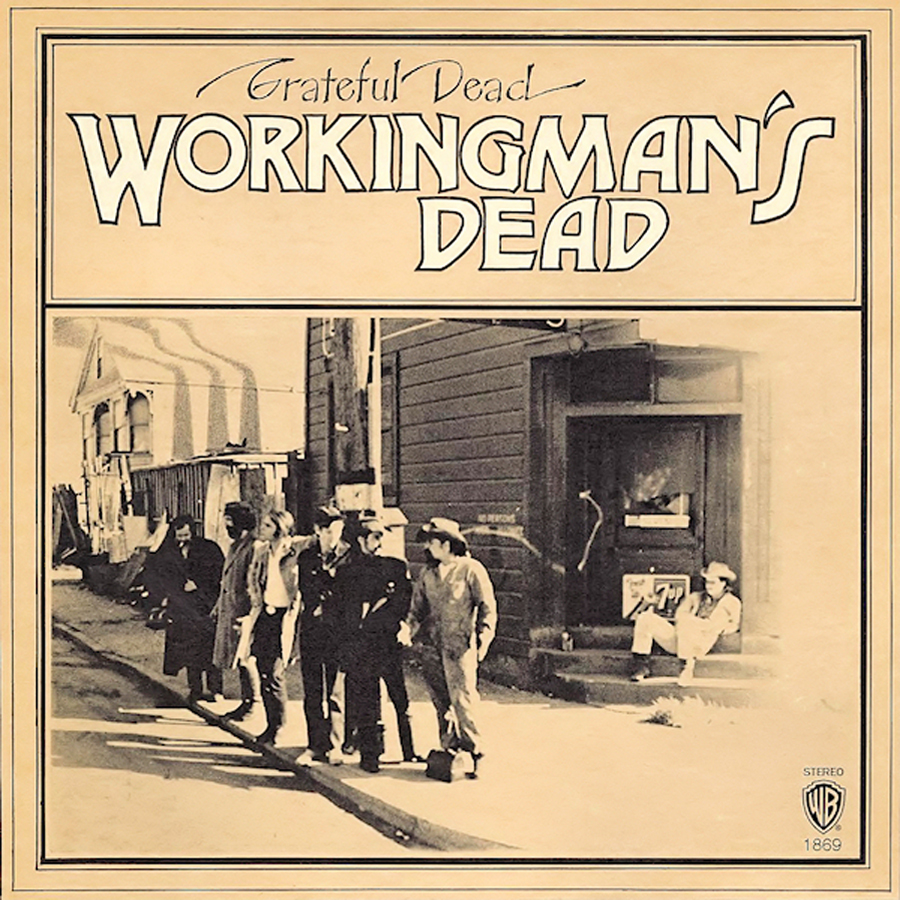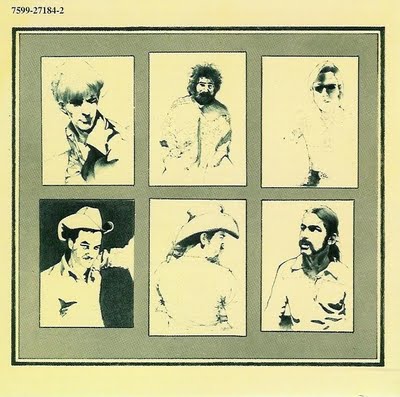Sunday, June 14, 2015
workingman's dead
The Grateful Dead went back to their roots and played to the tide with the acoustic country rock notions of this harmonic high time. Even as the band had reached the apex of their psychedelic experimentation with 'Live / Dead', they were beginning to explore more traditional sounds. The move from San Francisco’s Haight-Ashbury district across the Golden Gate Bridge to rustic Larkspur in Marin County inspired songwriters Jerry Garcia and Robert Hunter over the course of several months to create some of their most enduring songs as they harkened back to the country blues sound of their days as Mother McCree’s Uptown Jug Champions.
Hunter reveals: “The direction [Robbie Robertson] went with the Band was one of the things that made me think of conceiving Workingman’s Dead. I was very much impressed with the area Robertson was working in. I took it and moved it to the West, which is an area I’m familiar with…regional but not the South, because everyone was going back to the South for inspiration at that time.”
'Workingman's Dead' was recorded over nine days in San Francisco at Pacific High Recording Studio with Jerry Garcia on lead guitar, pedal steel guitar, banjo, and vocals; Bob Weir on guitar and vocals; Pigpen (Ron McKernan) on keyboards, harmonica, and vocals; Phil Lesh on bass and vocals; and Bill Kreutzmann and Mickey Hart on drums; with David Nelson playing acoustic guitar on "Cumberland Blues" and Tom Constanten contributing keyboards on reissue live bonus tracks "Dire Wolf", "Black Peter", "Easy Wind", "Cumberland Blues", and "Mason's Children". The sessions were produced by Bob Matthews, with Betty Cantor, and the Grateful Dead; and engineered by Alembic. The album credits Ramrod, Rex Jackson, and S. Heard as the equipment crew; Jon McIntire as Big nurse; Sam Cutler as Executive nanny; Cosmic Gail as Lady in waiting; David Parker and Bonnie Parker as Guardians of the vault; Mouse Studios, with Toon N Tree for Cover photo, art, and design; and gives special thanks to John Dawson. The shadows of a drug bust that January in New Orleans, manager Lenny Hart taking off with most of their money, and the huge recording cost of 'Aoxomoxoa' the year before gave the proceedings a sense of urgency.
Matthews says: “Workingman’s Dead was done very quickly,..We went into the studio first and spent a couple of days rehearsing—performing—all the tunes, recording them onto two-track. When that was done, I sat down and spliced together the tunes—beginning of side one to end of side one, beginning of side two to end of side two. I got that idea from Sgt Pepper’s: ‘Before we even start, let’s have a concept of what the end product is going to feel like, sequencing-wise.’
'Workingman's Dead' was their biggest album yet, going to number twenty-seven on the US album chart and became their first to be certified platinum. Along with their next album 'American Beauty' recorded just months later it is considered to be the pinnacle of their studio work.
Garcia would expound: “Workingman’s Dead was our first true studio album, insofar as we went in there to say ‘These are the limitations of the studio for us as performers; let’s play inside those limitations.’ That is we decided to play more or less straight-ahead songs and not get hung up with effects and weirdness. For me, the models were music that I’d liked before that was basically simply constructed but terribly effective – like the old Buck Owens records from Bakersfield. Those records were basic rock & roll: nice, raw, simple, straight-ahead music, with good vocals and substantial instrumentation but nothing flashy. Workingman’s Dead was our attempt to say, ‘We can play this kind of music – we can play music that’s heartland music. It’s something we do as well as we do anything’ ... We were into a much more relaxed thing at that time. We weren’t feeling like an experimental music group, but were feeling more like a good old band ... I liked all those tunes. I loved them all, to give you the absolute and unashamed truth. I felt that they were all good songs. They were successful in the sense you could sing ‘em and get off and enjoy singing ‘em. Uncle John’s Band was a major effort, as a musical piece. It’s one we worked on for a really long time, to get it working right. Cumberland Blues was also difficult in that sense ... Hunter and I always had this thing where we liked to muddy the folk tradition by adding our versions of songs to the tradition...We had our ‘Casey Jones’ song. We had our ‘Stagger Lee’ song. ‘Dupree’s Diamond Blues’ is another of those. It’s the thing of taking a well-founded tradition and putting in something that’s totally looped. It has a kind of carnival or medicine show kind of feel, and also a ragtime feel.”
http://www.dead.net/
'Workingman's Dead'
full album:
All songs written by Jerry Garcia and Robert Hunter, except where noted.
Side one
1. "Uncle John's Band" 0:00
2. "High Time" 4:44
3. "Dire Wolf" 10:00
4. "New Speedway Boogie" 13:13
Side two
5. "Cumberland Blues" (Garcia, Hunter, and Phil Lesh) 17:20
6. "Black Peter" 20:37
7. "Easy Wind" (Hunter) 26:21
8. "Casey Jones" 31:19
reissue bonus tracks
9. "Dire Wolf" 36:00 recorded at Santa Rosa Veteran's Memorial Hall on 6/27/1969
10 "Black Peter" 38:30 recorded at Golden Hall Community Concourse in San Diego on 1/10/1970
11 ."Easy Wind" 47:37 recorded at Springer's Ballroom in Portland on 1/16/1970
12. "Cumberland Blues" 55:50 recorded at the Oregon State University Gym on 1/17/1970
13. "Mason's Children" 1:00:37 recorded at the Civic Auditorium in Honolulu on 1/24/1970
14. "Uncle John's Band" 1:07:17 recorded at Winterland on 10/04/1970
'Workingman's Dead'
live:
Side one
1. "Uncle John's Band" 0:00
2. "High Time" 6:51 Dead Set -1981
3. "Dire Wolf" 15:32 Workingman'sDead Re-Issued Bonus Tracks-Santa Rosa Veteran's Memorial Hall in Santa Rosa CA on 6/27/1969
4. "New Speedway Boogie" 18:04 7/3/70 Canada
Side two
5. "Cumberland Blues" 24:41 9-26-1972 Stanley Theatre, Jersey City NJ
6. "Black Peter" 31:36 9-10-1972 Hollywood Palladium, Hollywood CA
7. "Easy Wind" 40:21 From The Vault 1-3\Three From The Vault
8. "Casey Jones" 48:40 9-9-1972 Hollywood Palladium, Hollywood CA
Live - February 14, 1970 - Fillmore East, NY
Dark Star
Hard To Handle
I've Been All Around This World
Me & My Uncle
Not Fade Away
Mason's Children
Subscribe to:
Post Comments (Atom)


No comments:
Post a Comment